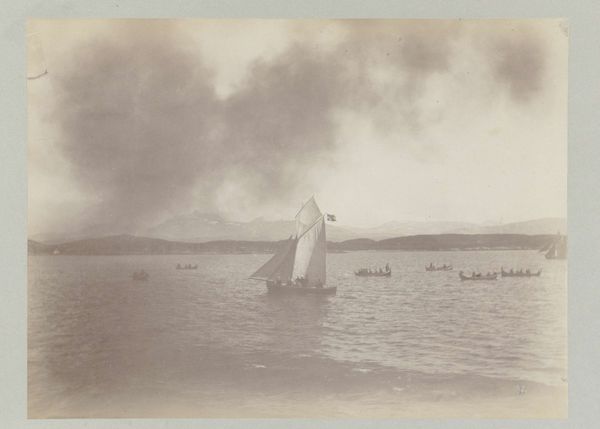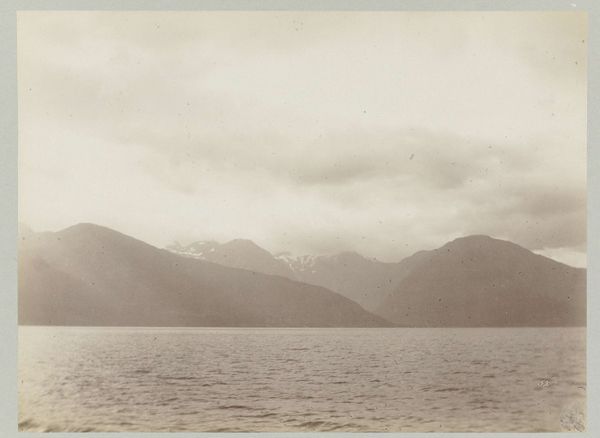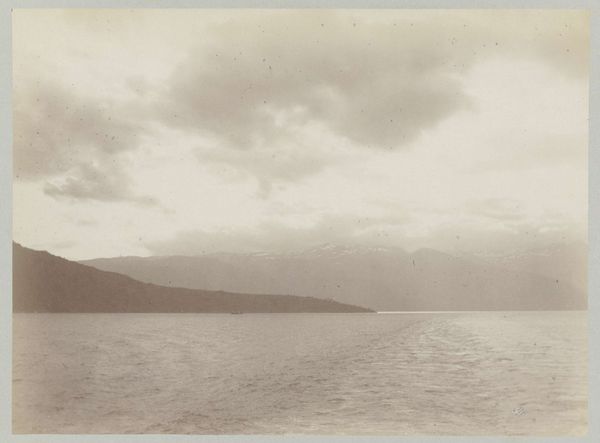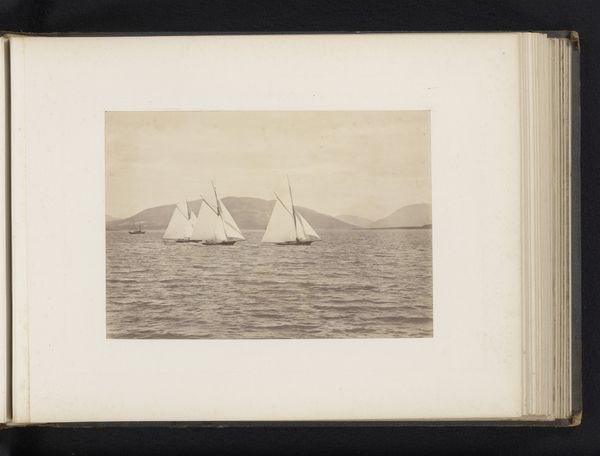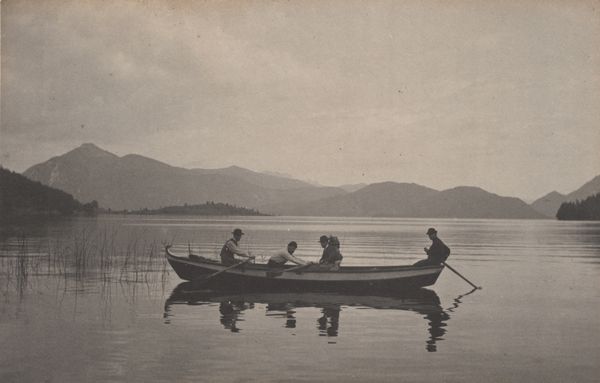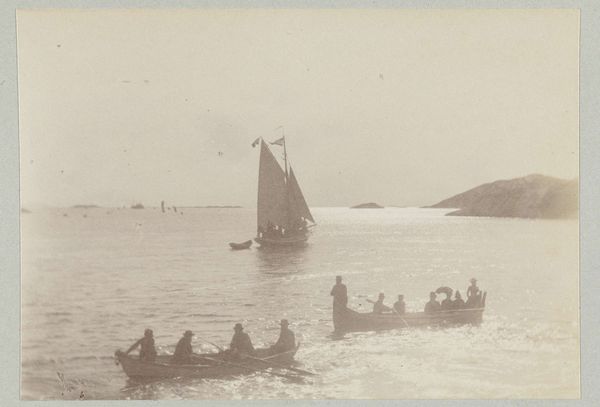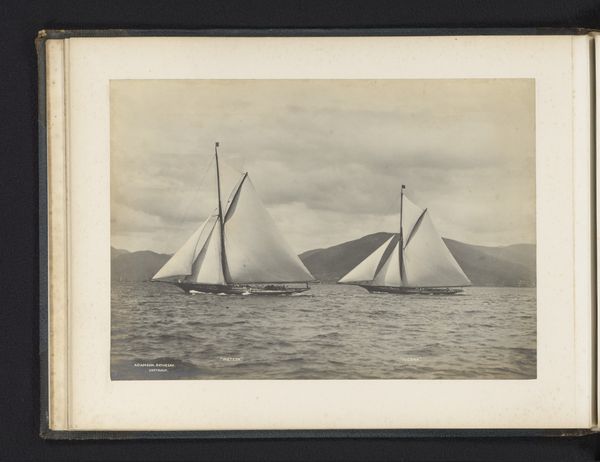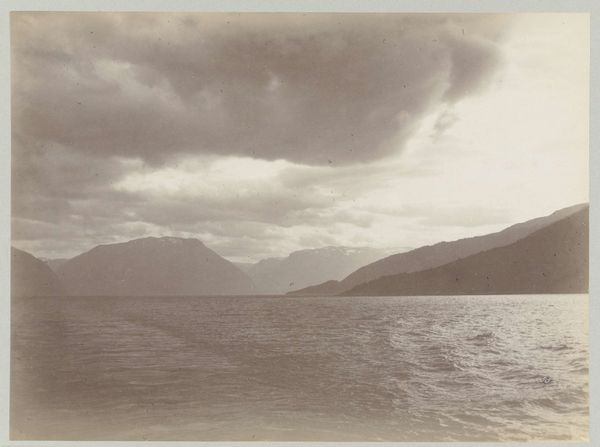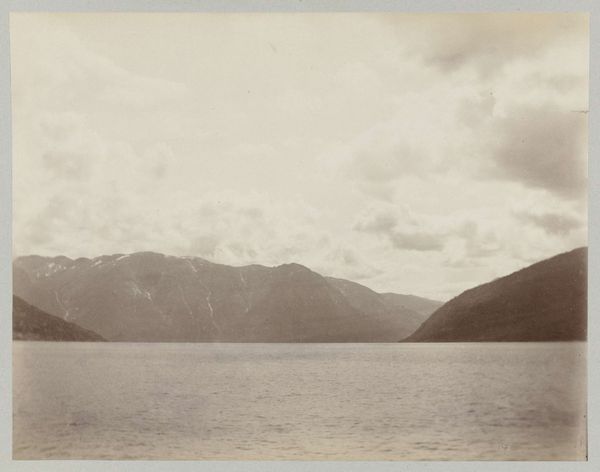
photography, gelatin-silver-print
#
water colours
#
impressionism
#
landscape
#
photography
#
gelatin-silver-print
#
watercolor
#
realism
Dimensions: height 80 mm, width 110 mm, height 314 mm, width 450 mm
Copyright: Rijks Museum: Open Domain
Editor: This gelatin-silver print, "Zeilboten in een baai" by Paul Güssfeldt, captured in 1889, presents a hazy seascape. I'm struck by how subdued the tonal range is, creating almost a dreamlike quality. How do you interpret the artistic and cultural choices in a piece like this? Curator: Well, considering its historical context, photography in 1889 was rapidly evolving as a tool for documentation but also for artistic expression. The subdued tones might reflect a deliberate aesthetic choice, mirroring the prevailing artistic sensibilities influenced by Impressionism and Realism which valued conveying a sense of atmosphere and capturing transient moments. How might this photograph engage with social and institutional issues? Editor: The Impressionistic landscape with photographic elements... it's as though he is attempting to capture movement itself. Maybe the ability to quickly, easily reproduce reality through photography democratized art, taking some of its social power from painting? Curator: That's a fascinating point! The rise of photography definitely challenged traditional art hierarchies. In terms of the public role of art, photographic prints were more accessible than paintings. The choice of sailboats, though seemingly simple, also speaks to an era of burgeoning maritime activity and exploration and connects the art piece to sociopolitical changes in Europe and across seas. Do you think that impacts our understanding today? Editor: Definitely! It allows us to examine what "landscape" meant at the time and how the medium, in this case photography, helped shape those definitions. Curator: Exactly. Thinking about the institutional framing, the image now residing in a museum adds another layer of interpretation, changing its cultural value and shaping the viewer’s experience of it today. It encourages reflection on the past through a modern lens. Editor: Thanks, it's interesting to see the ways in which historical context interacts with the visual to shape meaning, even now. Curator: Precisely! It highlights the continuous process of interpreting art and how it reflects evolving cultural landscapes.
Comments
No comments
Be the first to comment and join the conversation on the ultimate creative platform.


